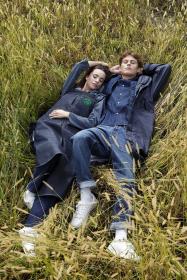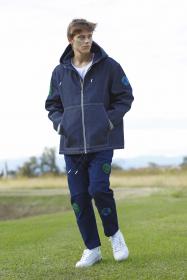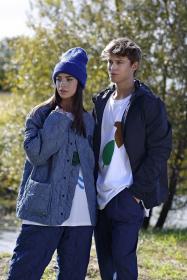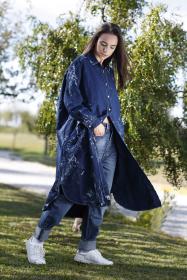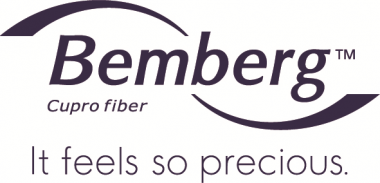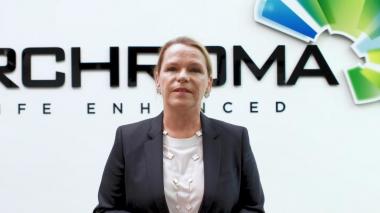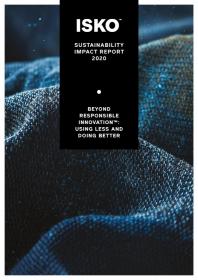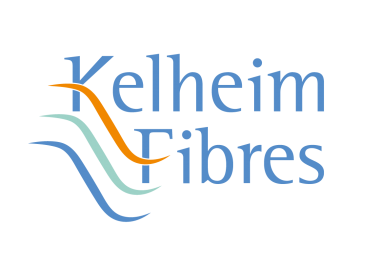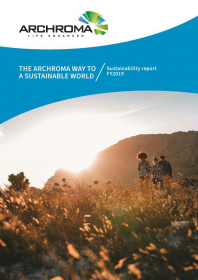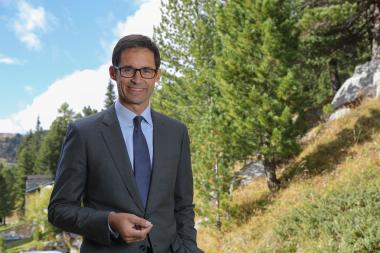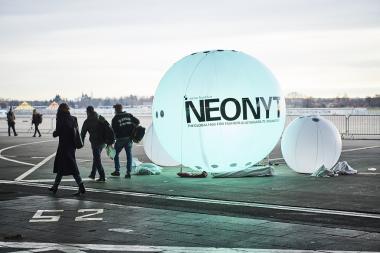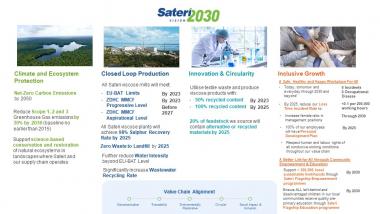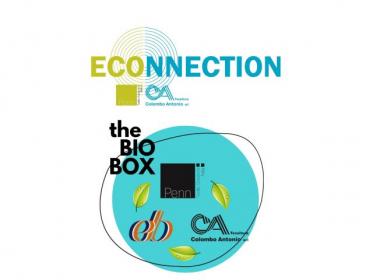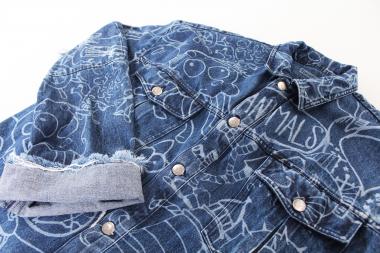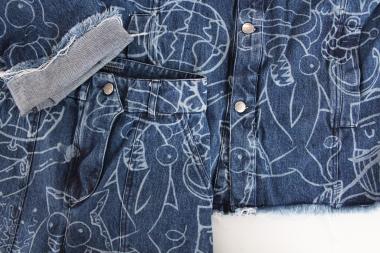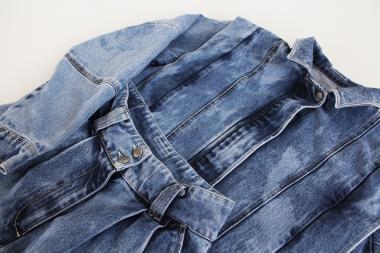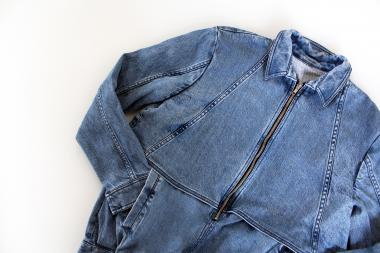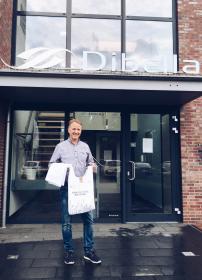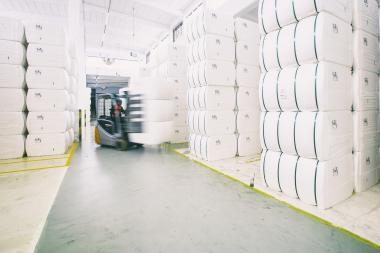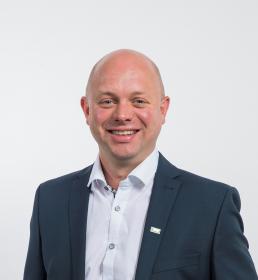Frankfurt Fashion Week: die Zukunft der Mode beginnt hier
- Zukunftsweisend – die Frankfurt Fashion Week positioniert sich mit einer konsequent nachhaltigen Agenda und forciert die Transformation hin zu einer modernen, ressourceneffizienten Branche
Die Conscious Fashion Campaign (CFC), in Kooperation mit dem United Nations Office for Partnerships (UNOP), wird Presenting Partner. Die Sustainable Development Goals (SDGs) werden bis 2023 Voraussetzung für Aussteller. Der Frankfurt Fashion SDG Summit by CFC wird zur internationalen Leitkonferenz für Nachhaltigkeit in der Modewelt. Die Zukunft hat längst begonnen. In Frankfurt am Main kommt vom 5. bis 9. Juli 2021 alles zusammen.
Frankfurt am Main, 2. Dezember 2020. Gemeinsam die Modebranche verbessern: Die Frankfurt Fashion Week positioniert sich als Gastgeber für die Zukunft der Mode und treibt die Transformation hin zu einer zukunftsorientierten, nachhaltigeren Fashion- und Textilbranche aktiv voran. In Frankfurt am Main werden vom 5. bis 9. Juli 2021 alle Entscheiderinnen und Entscheider zusammenkommen, die diesen Wandel mitgestalten wollen. Dafür ist den Initiatoren der Frankfurt Fashion Week – der Messe Frankfurt und der Premium Group – ein echter Coup gelungen: Die Conscious Fashion Campaign (CFC), die mit dem United Nations Office for Partnerships (UNOP) zusammenarbeitet, wird Presenting Partner. Aufbauend auf die bestehende Zusammenarbeit von UNOP und der Messe Frankfurt, soll die Frankfurt Fashion Week zu einer Plattform etabliert werden, die die Modebranche dabei unterstützt, die Sustainable Development Goals weiterzuentwickeln und die Dekade des Handelns (Decade of Action) einzuleiten.
„Frankfurt wird zum Gastgeber für die ganze Welt. Der Zuspruch, den wir erfahren, ist immens“, sagt Peter Feldmann, Oberbürgermeister der Stadt Frankfurt am Main, während der digitalen Pressekonferenz am heutigen Mittwoch. Und weiter: „Dass eine Fashion Week so vollkommen neu gedacht werden kann, ist für mich beeindruckend. Ein Beweis dafür, dass die Modebranche die Zeichen der Gegenwart und Zukunft richtig deutet. Es ist an der Zeit, dass Wertschöpfung und Werte konsequent miteinander in Einklang gebracht werden. Die konsequente Ausrichtung der Frankfurt Fashion Week an den Sustainable Development Goals ist ein wichtiger Schritt.“
„Es ist unser Anspruch, dass die Frankfurt Fashion Week eine aktive Rolle dabei spielt, Lösungen für gesamtgesellschaftliche Herausforderungen zu finden, und dass sie die Ziele der internationalen Politik unterstützt, so etwa den European Green Deal. Auch die Mode- und Textilbranche soll bis 2050 klimaneutral werden. Um das zu schaffen, müssen wir alle an einem Strang ziehen. Die Frankfurt Fashion Week lädt alle Initiierenden und Beteiligten nachhaltiger Konzepte, Kongresse und Shows, die sich dem Thema Sustainability widmen, ein, sich in Frankfurt zu treffen, zu diskutieren und konkrete Entscheidungen zu treffen, um gemeinsam an etwas Großem zu arbeiten. Wir vernetzen die relevantesten Makers und Shakers für eine zukunftsfähige Mode- und Textilbranche“, verdeutlicht Detlef Braun, Geschäftsführer der Messe Frankfurt.
„Angesichts ihrer globalen Reichweite ist die Modebranche in einer einzigartigen Position, für die Sustainable Development Goals zusammenzuarbeiten und sich für sie zu engagieren. Dies gilt besonders für die Bereiche Klimaschutz und verantwortungsvolle Produktion und Konsum“, sagt Annemarie Hou, Acting Executive Director of the United Nations Office for Partnerships. „Die Frankfurt Fashion Week und der Summit werden als wichtige Plattform für Bildung und Engagement der Mode- und Textilbranche in der ‚Decade of Action‘ dienen“, betont Hou.
Ziel der Frankfurt Fashion Week ist es, dass sich alle Ausstellenden, Teilnehmenden und Partnerinnen und Partner bis 2023 zu den Sustainable Development Goals bekennen. Die SDGs werden auch in sämtlichen Formaten der Frankfurt Fashion Week aufgegriffen. So werden die Nachhaltigkeitsziele der UN für das Publikum der Fashion Week sichtbar und erlebbar gemacht – und damit ihr Anspruch, ihre Ziele und konkrete Umsetzungsvorschläge in eine international meinungsbildende Fashion- und Lifestyle-Community hineingetragen. Während eines eintägigen Frankfurt Fashion SDG Summit presented by Conscious Fashion Campaign werden Themen wie Geschlechtergleichheit, sauberes Wasser, Klimaschutz, soziale Gerechtigkeit und ihre Bedeutung für eine zukunftsweisende Modebranche vertieft. Ein weiterer Punkt auf der Nachhaltigkeitsagenda: Die Frankfurt Fashion Week lanciert einen Nachhaltigkeitsaward für herausragendes, innovatives, nachhaltiges Design und weiteren Kategorien mit weltweiter Strahlkraft für die Mode- und Textilindustrie.
„Wir setzen uns dafür ein, Transformation in Gang zu bringen – dafür muss nicht nur der Mindset grundsätzlich geändert werden, sondern wir alle müssen auch den Mut haben, transparent und ehrlich zu sein. Es geht darum, Werte und Wertschöpfung nicht als Kontroverse, sondern als Chance zu begreifen. Wir tun das, was wir am besten können: relevante Player auf allen Ebenen miteinander vernetzen. Die Frankfurt Fashion Week mit ihrem Ecosystem wird zum Enabler. Wir kreieren eine Plattform, die den branchenweiten Change choreografiert. Mit diesem Impuls entwickeln wir auch unsere Messeformate von einem Marketplace of Product zu einem Marketplace of Purpose and Ideas“, sagt Anita Tillmann, Managing Partner der Premium Group.
Neustart in Frankfurt. Informieren, inspirieren, diskutieren, verhandeln, feiern – im Sommer 2021 kommt die gesamte Fashionbranche in die Mainmetropole. „Das Bedürfnis, sich endlich wieder physisch zu treffen, auszutauschen und inspirieren zu lassen, ist groß. Gleichzeitig sind digitale Tools und Formate nicht mehr aus der Fashionbranche wegzudenken“, so Markus Frank, Wirtschaftsdezernent der Stadt Frankfurt und damit auch verantwortlich für die Kreativwirtschaft am Main. „Um ein so zukunftsorientiertes und ganzheitlich gedachtes Gesamtkonzept umzusetzen, bietet die Frankfurter Business- und Kreativszene mit ihren international vernetzten Agenturen, Hochschulen und Museen eine nahezu einmalige Konzentration unterschiedlicher Kompetenzen. Unsere facettenreiche und hochwertige Frankfurter Club-, Bar- und Gastronomieszene, unsere vielschichtige Hotellerie und unsere international renommierte Handelslandschaft werden dafür zur Bühne. Diesem Netzwerk wird bei der erfolgreichen Umsetzung der Frankfurt Fashion Week und der Art und Weise, wie sie als kulturelles und gesellschaftliches Happening in den öffentlichen Raum hineinstrahlen wird, ein wesentlicher Faktor zukommen.“
Von großer Bedeutung für die Frankfurt Fashion Week ist es außerdem, auch den Fashion Council Germany (FCG) an Bord zu haben. Der FCG ist die Institution für Deutsches Modedesign. Er fördert Designer, engagiert sich für mehr politische Relevanz und stärkt die internationale Sichtbarkeit und Wahrnehmung Deutscher Mode. Bei der Frankfurt Fashion Week wird sich der FCG mit ausgewählten Formaten, zum Beispiel mit dem etablierten Fireside Chat und einem zukunftsorientierten Accelerator-Format zur Unterstützung deutscher Designer einbringen.
„Was mich an der Frankfurt Fashion Week besonders beeindruckt, ist der Gedanke der Vernetzung: Die Kreativwirtschaft trifft auf die Finanzwelt, das verbindende Element ist die Nachhaltigkeit. So könnten wir in Zukunft auch das Green Finance Cluster mit der Frankfurt Fashion Week verknüpfen. Das sind neue Impulse in der Modebranche, die sicher weit über Frankfurt und Hessen hinausstrahlen werden. Nach diesem sehr schwierigen Jahr für die Messebranche ist das Konzept ein echter Mutmacher“, resümiert Tarek Al-Wazir, Hessischer Minister für Wirtschaft, Energie, Verkehr und Wohnen und Stellvertretender Ministerpräsident des Landes Hessen.
Frankfurt Fashion Week Anita Tillman Detlef Braun Fashion Mode Digitalisierung Nachhaltigkeit
Kern Kommunikation GbR









